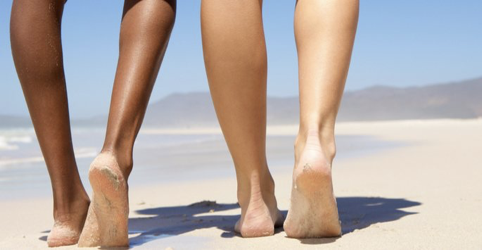
What Can You Do About Varicose Veins?
What are varicose veins?
Varicose veins occur when veins become enlarged, swollen, dilated, and overfilled with blood. Varicose veins typically appear blue or dark purple. They happen when the valves in the veins do not work properly, so the blood does not flow effectively.
The condition is very common, especially in women. More than 25 % of all adults are thought to be affected by varicose veins. Approximately 1 in 4 adults in the United States is affected by varicose veins. Pregnant women are more susceptible to varicose veins.
Spider veins are similar to varicose veins, but they're smaller. Spider veins are found closer to the skin's surface and are often red or blue.
Spider veins occur on the legs, but can also be found on the face. They vary in size and often look like a spider's web.
- Symptoms:
Varicose veins may not cause any pain. Signs you may have varicose veins include; veins are dark purple or blue in color and appear twisted and bulging.
When painful signs and symptoms occur, they may include; an achy or heavy feeling in your legs, burning, throbbing, muscle cramping and swelling in lower legs, worsened pain after sitting or standing for a long time, itching around one or more of veins and skin discoloration around a varicose vein.
In severe cases, a varicose vein may rupture, bleed, or develop into varicose ulcers on the skin.
- Causes:
Varicose veins occur when veins aren’t functioning properly. Weak or damaged valves can lead to varicose veins. Arteries carry blood from heart to the rest of tissues, and veins return blood from the rest of body to heart, so the blood can be recirculated. To return blood to heart, the veins in legs must work against gravity.
Muscle contractions in lower legs act as pumps, and elastic vein walls help blood return to heart. Tiny valves in veins open as blood flows toward heart then close to stop blood from flowing backward. If these valves are weak or damaged, blood can flow backward and pool in the vein, causing the veins to stretch or enlarge.
- Risk factors:
Factors that increase your risk of developing varicose veins:
Age. The risk of varicose veins increases with age. Aging causes wear and tear on the valves in veins that help regulate blood flow.
Sex. Women are more likely to develop the condition. Hormonal changes during pregnancy, pre-menstruation or menopause may be a factor because female hormones tend to relax vein walls. Hormone treatments, such as birth control pills, may increase risk of varicose veins.
Pregnancy. During pregnancy, the volume of blood in body increases. This change supports the growing fetus, but also can produce an unfortunate side effect — enlarged veins in legs. Hormonal changes during pregnancy may also play a role.
Family history. If other family members had varicose veins, there's a greater chance you will too.
Obesity. Being overweight puts added pressure on your veins.
Standing or sitting for long periods of time. Your blood doesn't flow as well if you're in the same position for long periods.
- Complications:
Complications of varicose veins, although rare, can include:
Ulcers. Painful ulcers may form on the skin near varicose veins, particularly near the ankles. A discolored spot on the skin usually begins before an ulcer forms.
Blood clots. Occasionally, veins deep within the legs become enlarged. In such cases, the affected leg may become painful and swell. Any persistent leg pain or swelling warrants medical attention because it may indicate a blood clot.
Bleeding. Occasionally, veins very close to the skin may burst. This usually causes only minor bleeding.
- Prevention:
There's no way to completely prevent varicose veins. But improving circulation and muscle tone may reduce risk of developing varicose veins. The same measures you can take to treat the discomfort from varicose veins at home can help prevent varicose veins, including; exercising, following your weight, eating a high-fiber, low-salt diet, avoiding high heels and tight hosiery, elevating your legs and changing your sitting or standing position regularly
- Treatment:
If the patient has no symptoms or discomfort, treatment might not be necessary. However, if there are symptoms, treatment may be required to reduce pain or discomfort, address complications, such as leg ulcers, skin discoloration, or swelling.
Most varicose veins do not need to be removed. If particularly bothersome, varicose veins can be eliminated by one of several methods; surgery or a wide variety of minimally invasive treatment options for varicose veins are available. These include; sclerotherapy, microsclerotherapy, laser surgery, endovenous ablation therapy and endoscopic vein surgery.
The method recommended can depend on your symptoms, size, and location of the varicose vein.
References:
1- https://www.medicalnewstoday.com/articles/240129.php
2- https://www.mayoclinic.org/diseases-conditions/varicose-veins/symptoms-causes/syc-20350643
3- https://www.healthline.com/health/varicose-veins
4- https://www.webmd.com/skin-problems-and-treatments/understanding-varicose-veins-basics